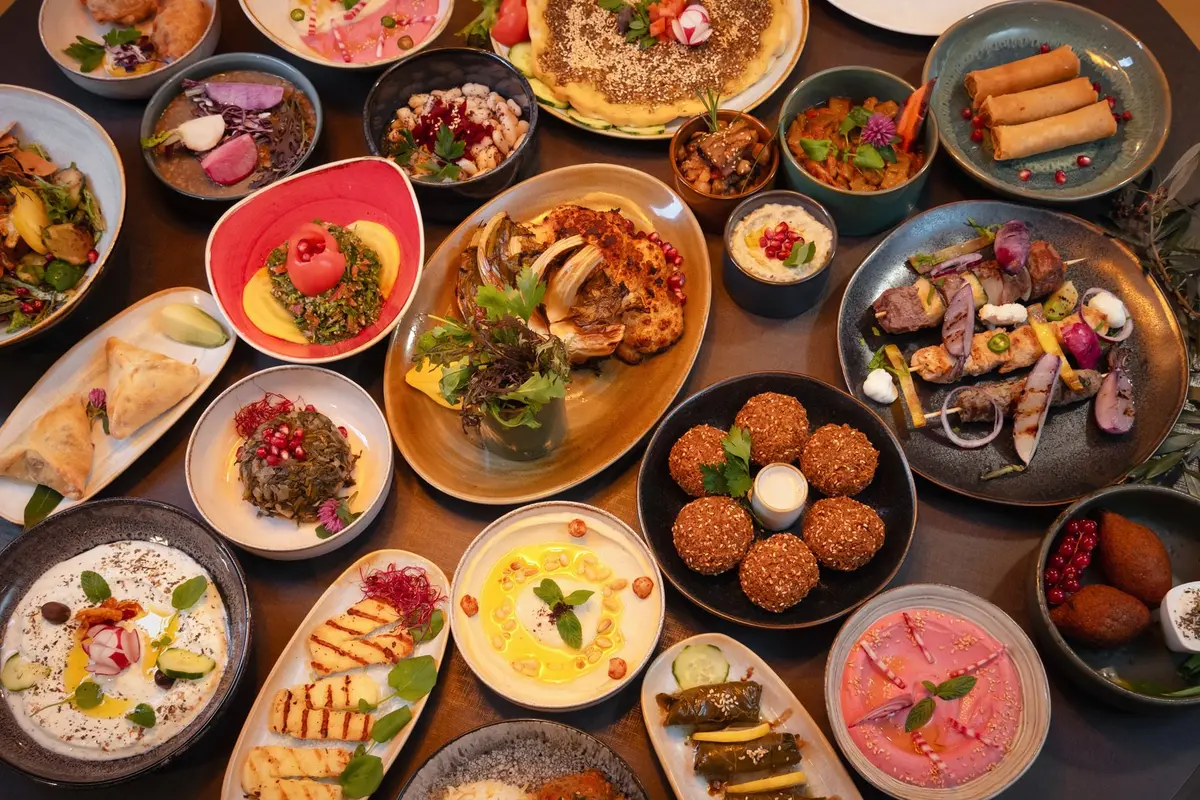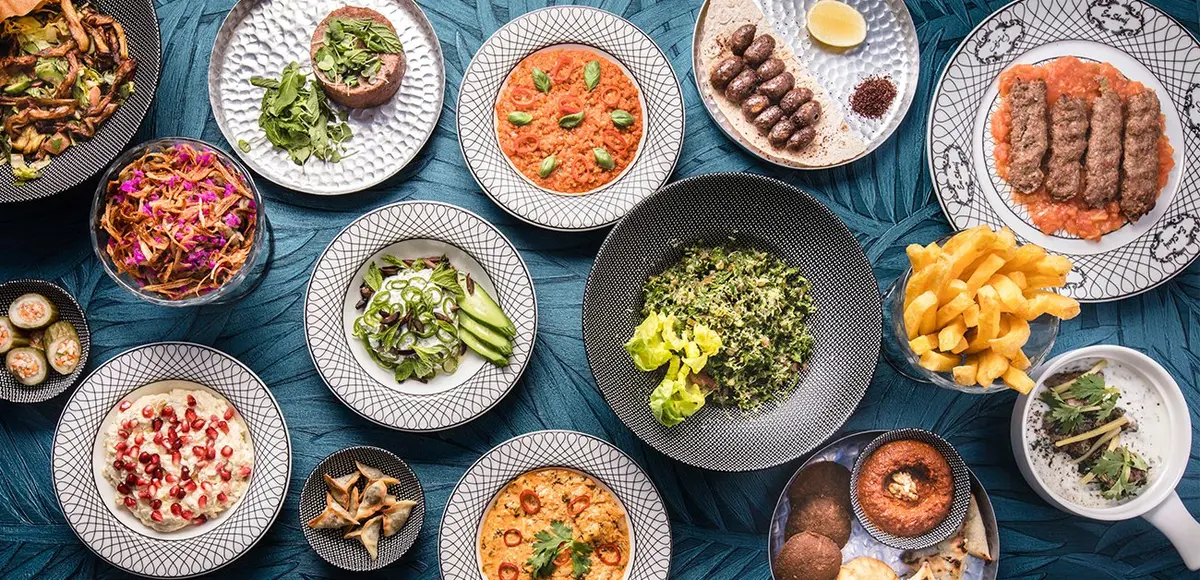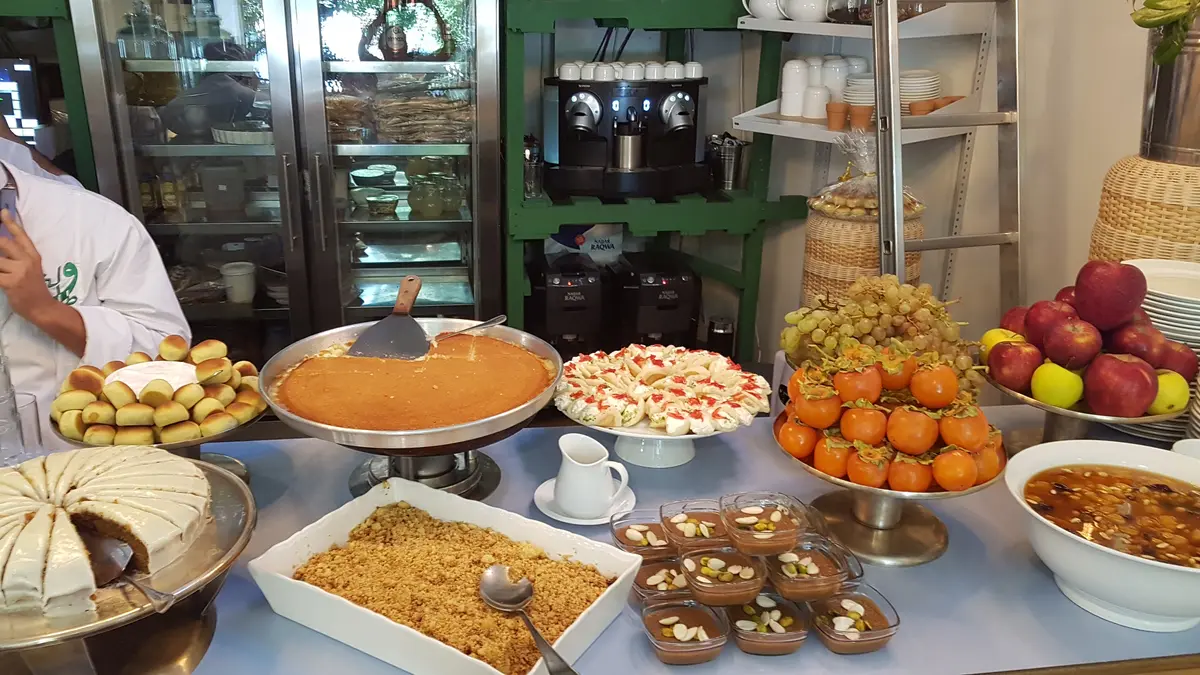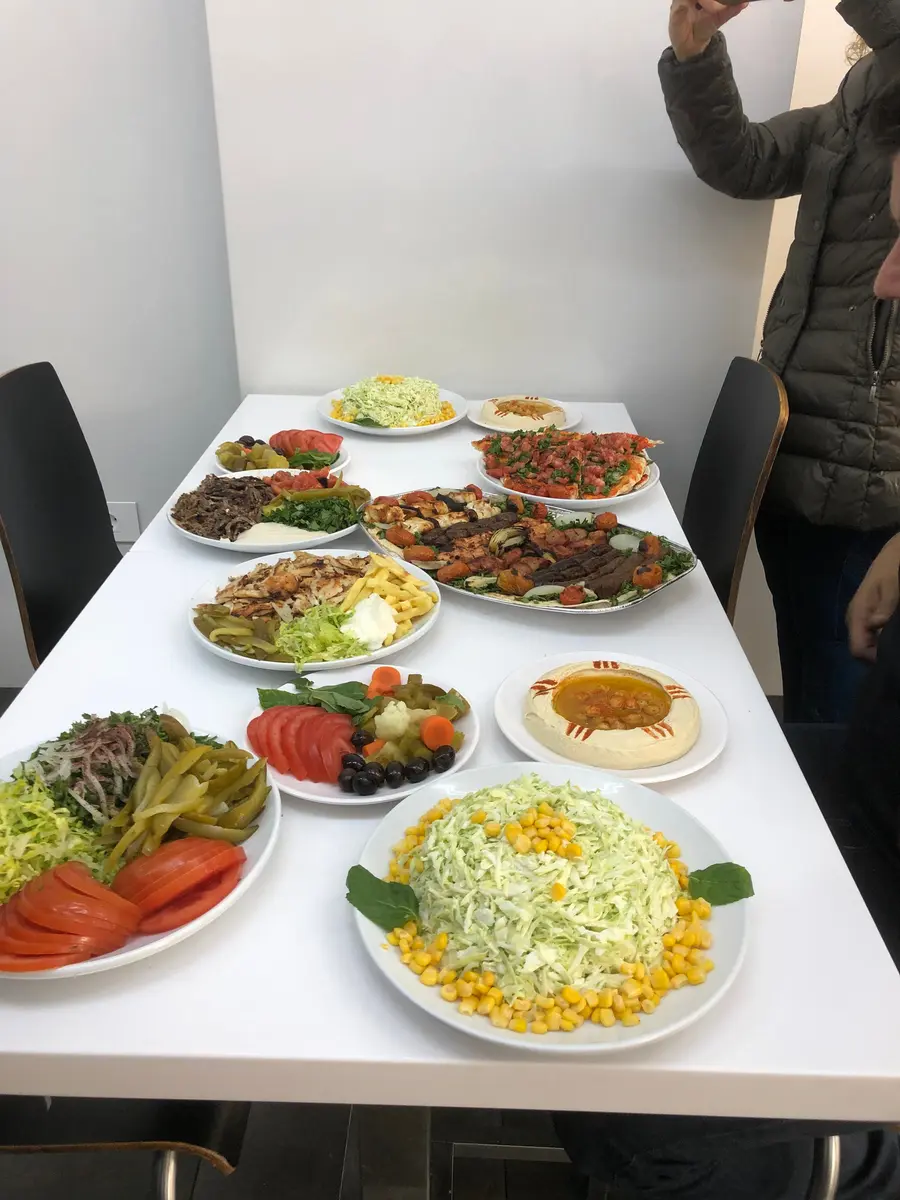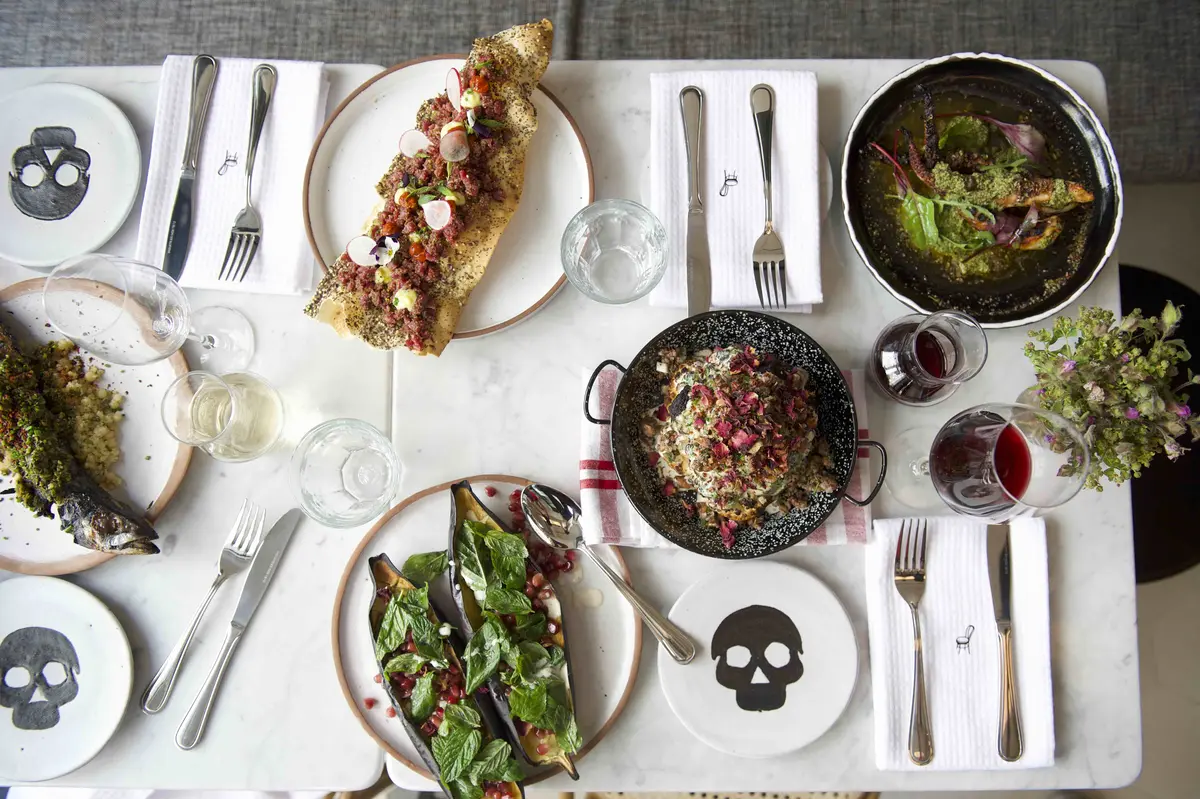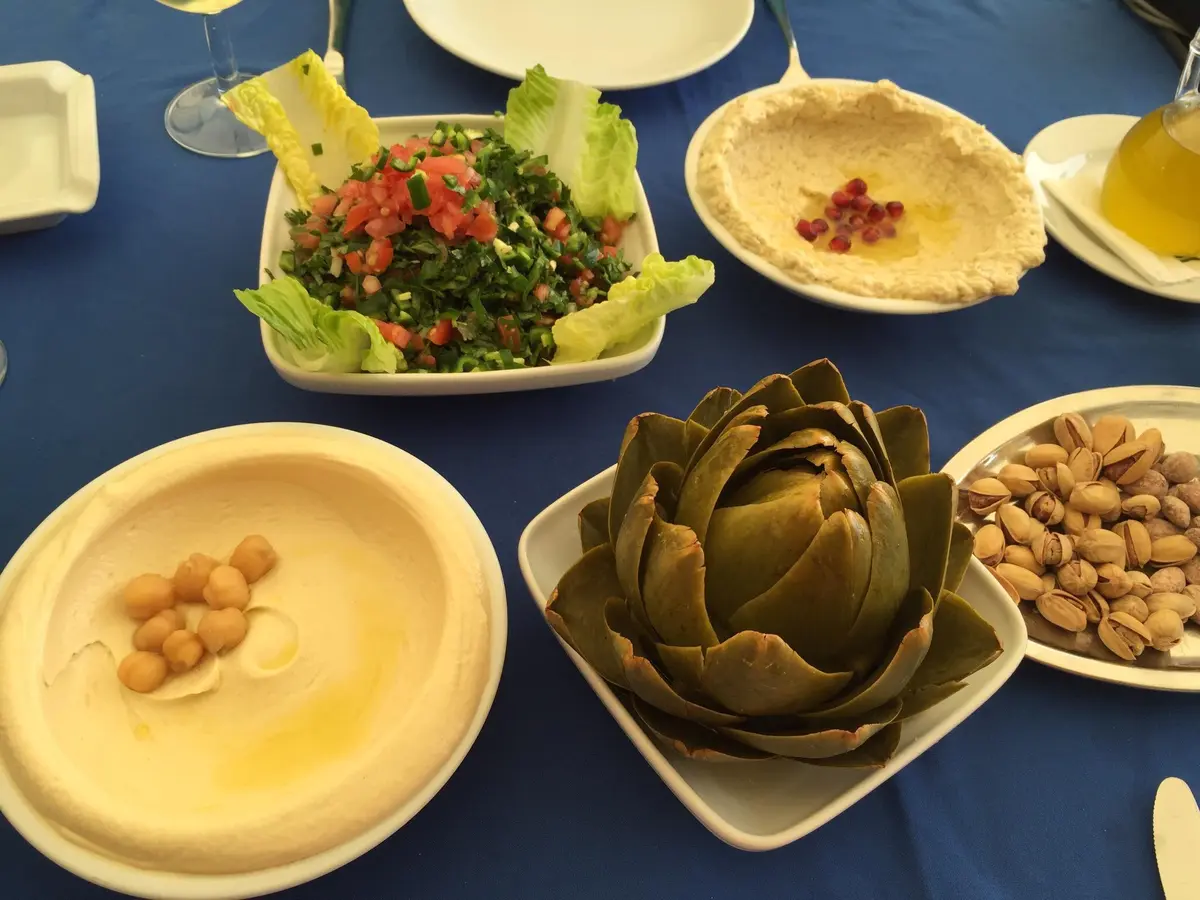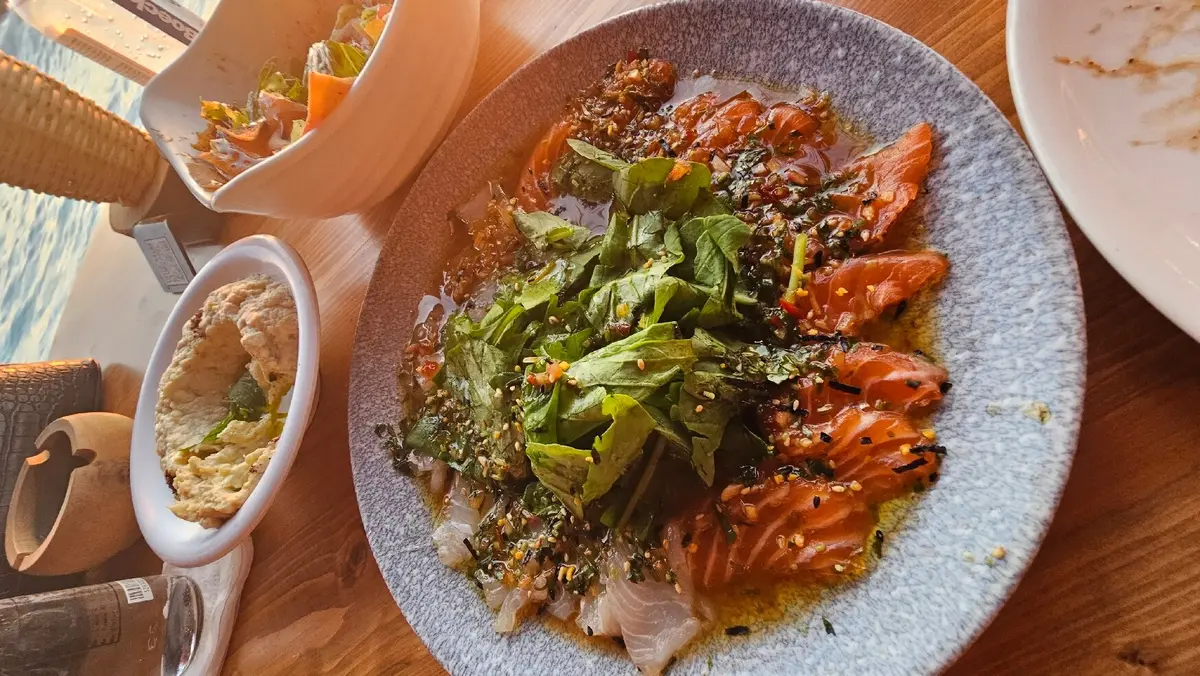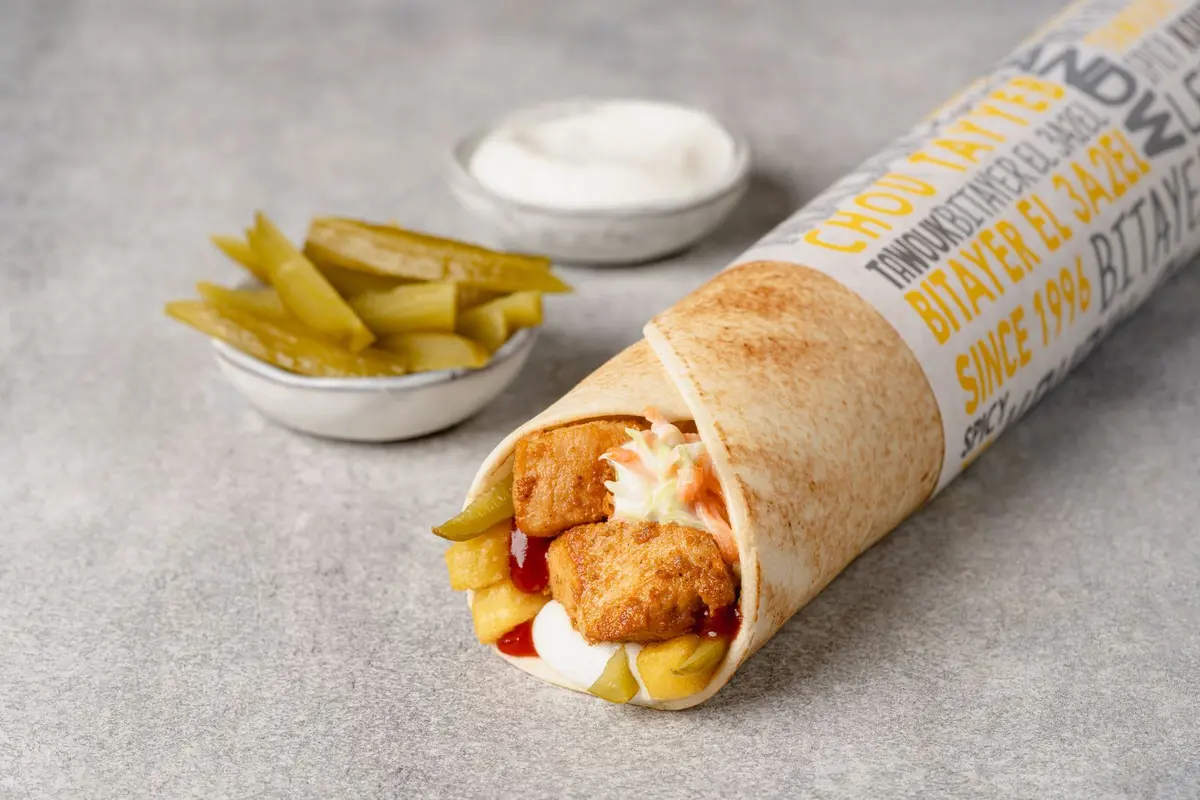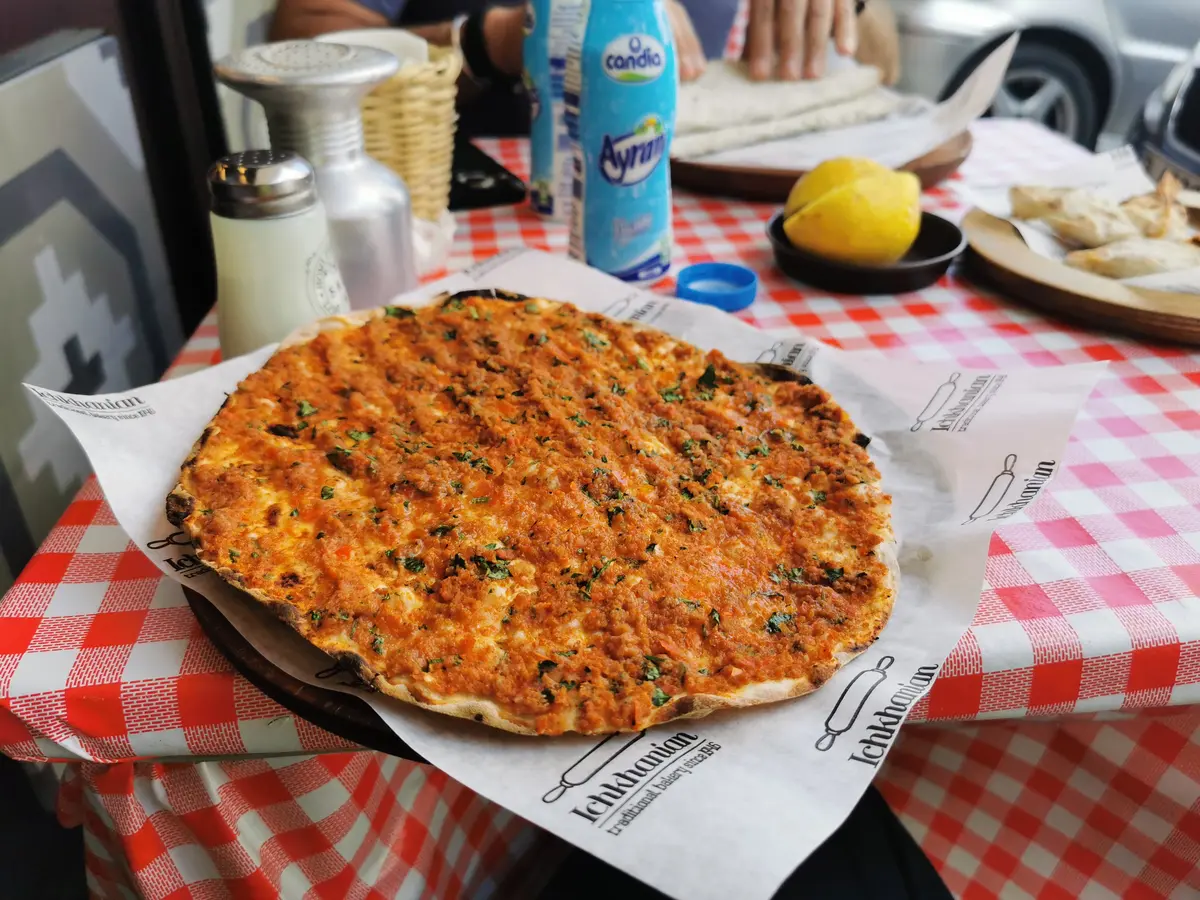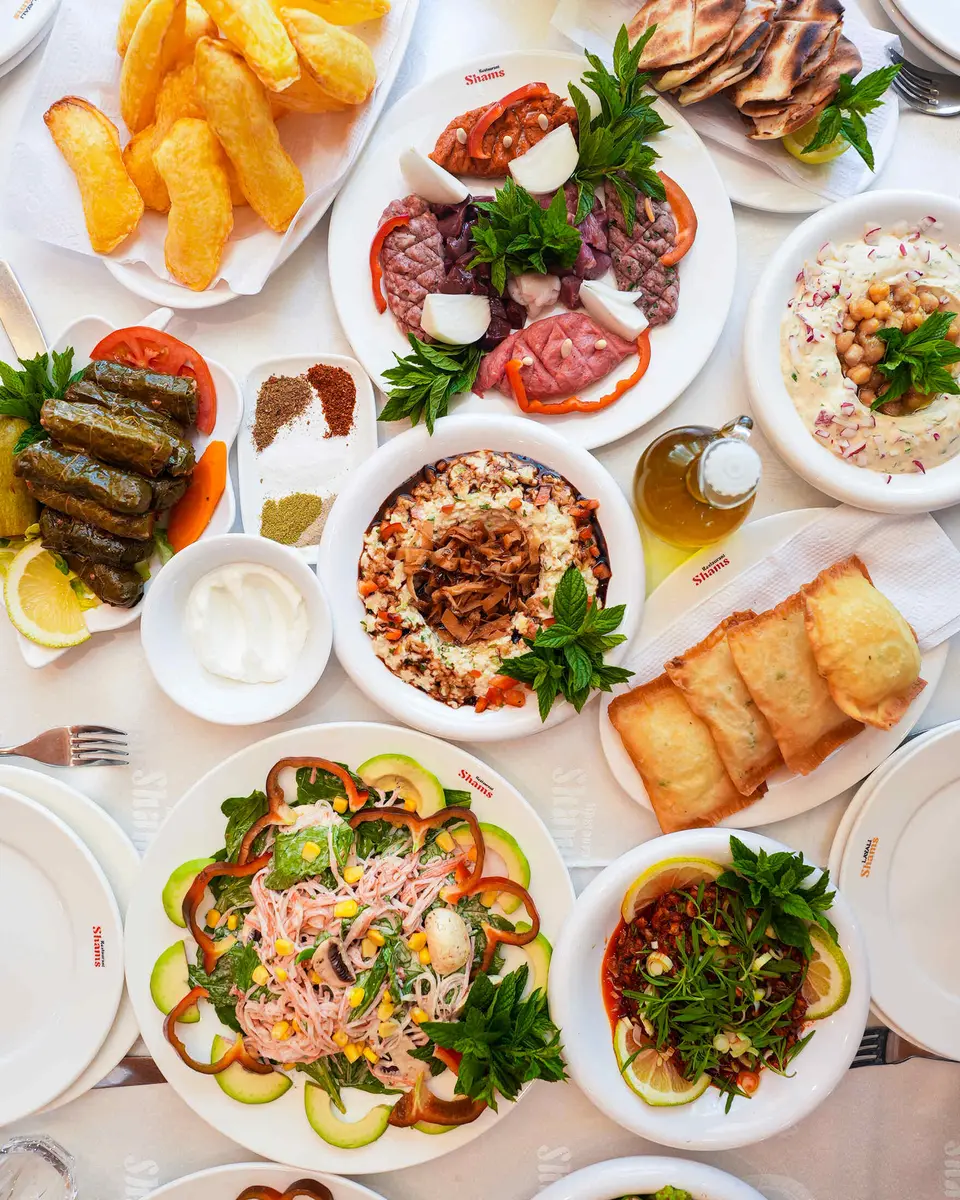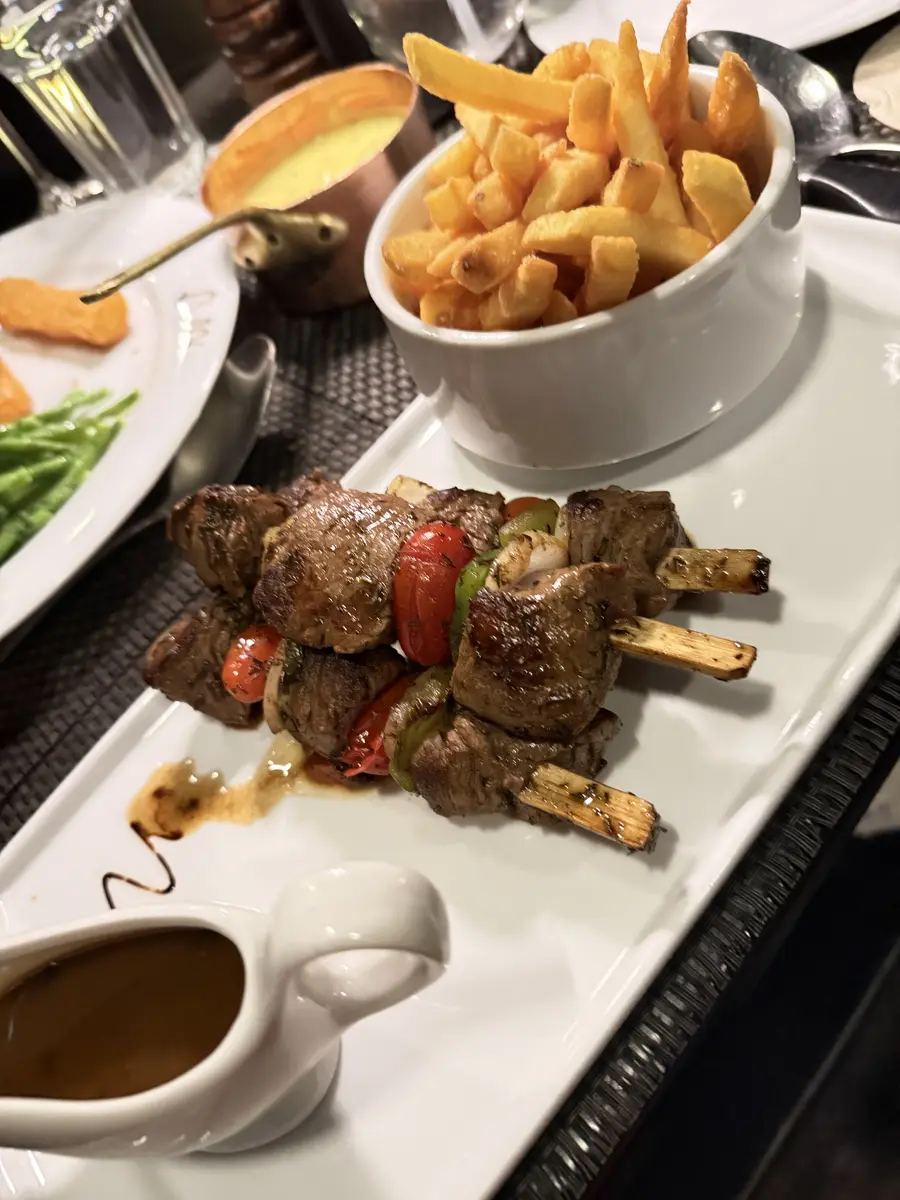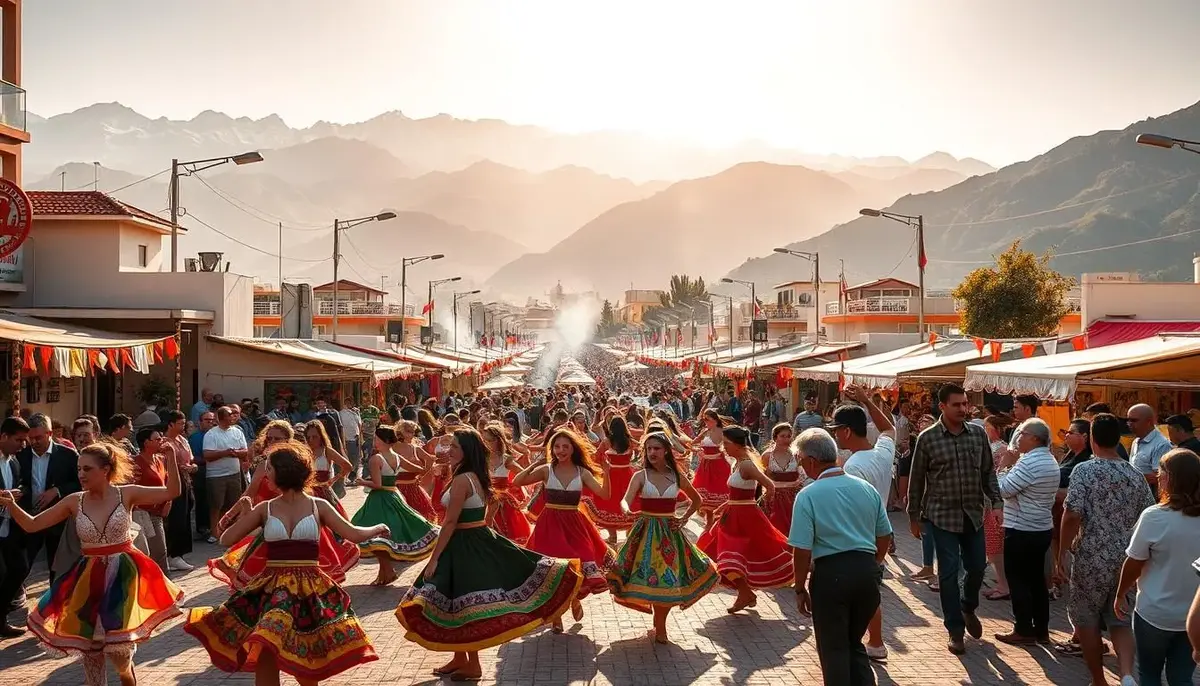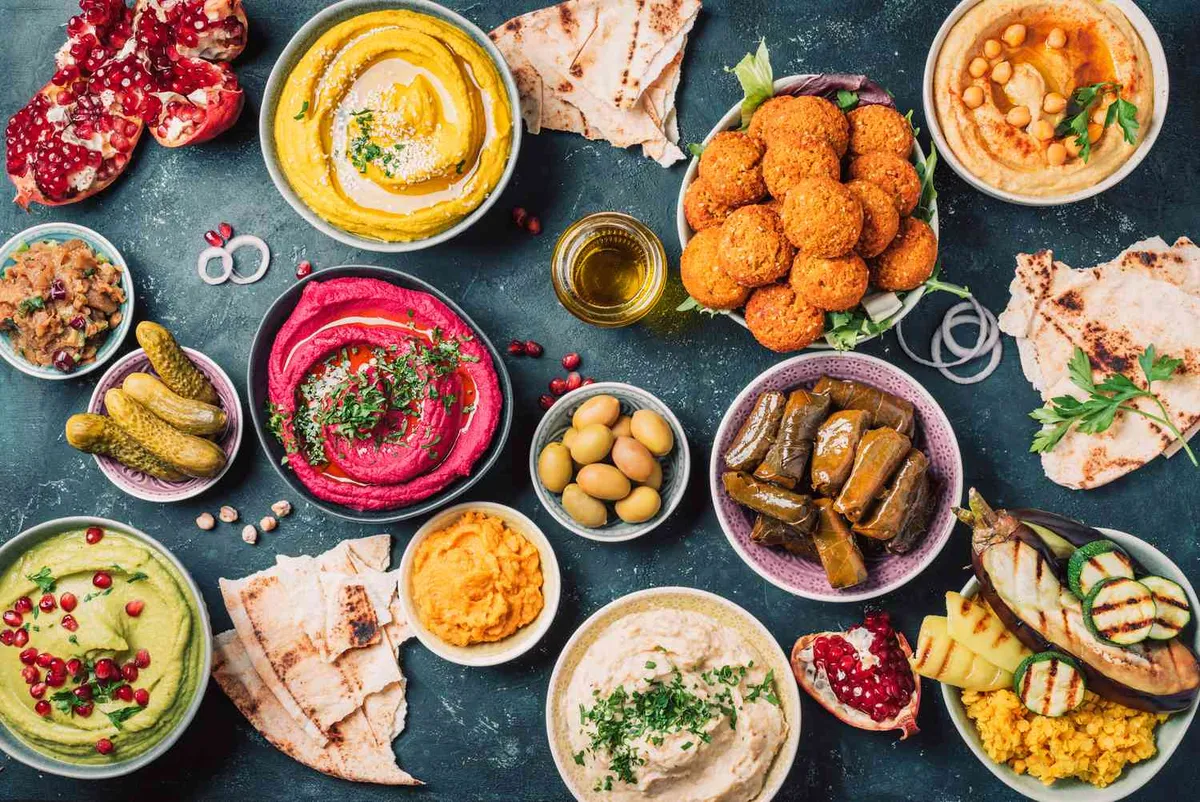If you’re searching for “lebanon restaurants” and hoping to find incredible dining experiences, you’ve come to the right place—but we’re talking about the country of Lebanon, not a town in Pennsylvania. This Middle Eastern nation produces one of the most delicious cuisines on earth. I’ve spent months on the ground eating my way through everything from 5 AM street food runs in Beirut to long, lazy seafood lunches by the Mediterranean. As a professional travel writer who shed 27 pounds specifically to prepare for this feast, I can tell you: Lebanon is a food paradise worth every single calorie.
How to Eat at Lebanon Restaurants: A Guide for Americans
Before diving into where to eat, you need to understand how Lebanese dining works. This isn’t your typical American three-course meal—it’s an entirely different social experience that can make or break your trip.
The Mezze: A Shared Feast, Not an Appetizer
Your first lesson: mezze is not “appetizers” in the American sense. This is a community approach designed to unite people around the table in a spirit of sharing. You’ll order 15-20 different small plates for the entire table to share, mixing cold dishes like hummus and tabbouleh with hot plates like fried kibbeh and grilled halloumi. Use Lebanese pita bread as your primary utensil to scoop everything, and pace yourself—these meals last for hours over conversation. No one orders their own dish; everything is shared.
The Arak Ritual You Need to Know
You’ll see tall, clear bottles of arak on most tables—this is Lebanon’s national drink, an anise-flavored spirit often over 50% alcohol. Here’s the critical ritual: mix it in a 1:2 ratio with water first (you’ll see it magically turn milky-white), then add ice. Never put ice in first, or the oils will congeal into an unappetizing film that marks you as an amateur. Arak is the perfect palate-cleansing accompaniment to mezze, cutting through rich, garlicky dips and refreshing your taste buds for the next bite.
Practical Dining Tips for Travelers
Check your bill before tipping—many Lebanon restaurants automatically add a 10% service charge, so no extra tip is needed unless service was exceptional. If there’s no service charge, 10-15% is polite and generous. Cash tips are preferred even if you pay by card. Bring US dollars, which are widely accepted and often preferred. Dinner starts late—don’t expect restaurants to be lively at 7 PM. Prime time is 9 PM or later, and meals are leisurely affairs where conversations can stretch for hours.
11 Best Lebanon Restaurants for an Unforgettable Meal
1. Em Sherif, Beirut – Michelin-worthy Lebanese Feast
This isn’t a simple dinner; it’s a performance. Em Sherif is your “big night out” in Beirut, set in an opulent room that feels like a chic, magical Parisian apartment, often with live traditional music. Ranked among MENA’s 50 Best Restaurants, with chef Yasmina Hayek winning the prestigious MICHELIN Guide’s Young Chef Award, this place delivers world-class credentials.
You don’t order from a menu—you simply sit down for the set menu, and the feast begins. Dozens of mezze plates arrive in waves, each more exquisite than the last. This is hands down the best Lebanese food experience for a luxurious, all-encompassing meal that showcases the full breadth of Lebanese cuisine in one sitting.
Critic’s Notebook: Pros and Cons
Pros: Delivers an unforgettable cultural experience with exceptional food quality that justifies the premium price.
Cons: This is a splurge meal. The formal atmosphere may feel too stuffy for travelers seeking a more casual, authentic street-food experience.
At a Glance
Best time to visit: Dinner reservations, 8 PM or later
What to order: The full set menu experience (no à la carte needed)
2. Tawlet, Beirut – Farm-to-Table Regional Home Cooking
Tawlet is more than a restaurant—it’s a social enterprise and my number one recommendation for lunch in Beirut. Founded by Kamal Mouzawak, who won the Foodics Icon Award from MENA’s 50 Best, this “farmers’ kitchen” features a genius concept: each day, a different woman from a different Lebanese village takes over the kitchen to cook her region’s traditional home-cooked food.
You’ll find a huge buffet of real Lebanese home cooking that changes daily. One day it’s food from the South, the next from the North. I even took a cooking class here with Georgina, who was feisty and not afraid to swat your hand if you did something wrong. We made kebbeh batata (potato version of kibbeh) and moutabbal (smoky eggplant dip) from scratch. This is the single most authentic and heartwarming culinary experience in the city.
Critic’s Notebook: Pros and Cons
Pros: Unmatched authenticity, supports local communities, and features dishes you won’t find elsewhere. The buffet format lets you sample multiple regional specialties.
Cons: The daily menu is unpredictable, so if you have dietary restrictions or specific dishes in mind, this might not work. The buffet can also run low on popular items if you arrive late.
At a Glance
Best time to visit: Lunch service, arrive before 1 PM
Contact: Offers cooking classes—inquire in advance
What to order: The daily buffet (changes by chef)
3. Restaurant Joseph, Beirut – “World’s Best” Chicken Shawarma
This bustling street food counter in the Sin el-Fil neighborhood won the “Tastiest Sandwich in the World” award in 2015. The Four Seasons concierge recommends it as a must-try, and after eating there, I understand why this humble shop has earned such prestigious recognition.
I watched Joseph himself build my chicken shawarma—juicy chicken with an amazing garlic sauce, bread with a nice crunch, and pickles that snap. It was like a chicken salad with herbs inside bread, but elevated to an art form. At less than $3, it’s the best value meal in Beirut and lives up to every bit of the hype.
Critic’s Notebook: Pros and Cons
Pros: Unbeatable value and internationally recognized quality. You’ll experience Lebanon’s street food culture at its finest for pocket change.
Cons: It’s a bare-bones counter with minimal seating—this is grab-and-go food. The location in Sin el-Fil also requires a taxi ride from central Beirut.
At a Glance
Best time to visit: Lunch or early evening
Location: Sin el-Fil neighborhood, Beirut
What to order: Chicken shawarma
4. Al Soussi, Beirut – Anthony Bourdain-Approved Breakfast
This tiny, no-frills breakfast joint is the ultimate “if you know, you know” spot. As one food writer noted, “it isn’t charming”—you’re here for one reason: the food. Anthony Bourdain featured it, CNN named it one of the “Best Breakfasts Around the World,” and Mark Wiens filmed his legendary 14-hour food tour here.
This is cheap, cheerful, and absolutely excellent. Order the fattey—a warm, garlicky yogurt-and-chickpea dish that’s Lebanon’s answer to the perfect comfort food breakfast. Don’t leave without trying the hummus with awarma, creamy hummus topped with qawarma (spiced lamb and fat) and eggs. It’s heavy, it’s rich, and it’s the perfect fuel for exploring Beirut.
Critic’s Notebook: Pros and Cons
Pros: Delivers authentic Lebanese breakfast at incredibly low prices with celebrity chef endorsements backing its quality. You’ll eat alongside locals in a genuine neighborhood setting.
Cons: Zero atmosphere—fluorescent lighting, plastic chairs, and a purely functional space. If you need Instagram-worthy ambiance, look elsewhere.
At a Glance
Best time to visit: Early morning (7-10 AM)
What to order: Fattey and hummus with awarma
5. Baron, Beirut – Modern, Refined “Cool” Beirut
If Em Sherif represents classic Lebanese dining, Baron is the “new” Beirut. This is the definition of “cool”—dimly lit, quiet yet laid back, and perfect for refined, modern dining that reimagines traditional ingredients.
This was a one-of-a-kind meal where simple ingredients are cooked to absolute perfection. Skip the traditional stuff and go straight for the vegetables, which are the stars. The roasted halloumi served in a unique citrusy grapefruit and pistachio chili sauce was a revelation. The baklava with mastic ice cream provided the perfect, non-traditional end to the meal.
Critic’s Notebook: Pros and Cons
Pros: Innovative takes on Lebanese ingredients with impeccable execution and a sophisticated atmosphere. Perfect for travelers who want modern Lebanese cuisine.
Cons: The menu is smaller than other Lebanon restaurants, and I wished I had a larger group to try more dishes. Some traditionalists might find the modern interpretations too far from authentic Lebanese cooking.
At a Glance
Best time to visit: Dinner, 8-10 PM
What to order: Roasted halloumi, vegetable-focused dishes, baklava with mastic ice cream
6. Mounir, Broumana – Epic Mountain Views and Classic Mezze
This is one of the best food experiences I’ve had in Lebanon. Mounir is a 40-year-old institution set high in the mountains of Broumana, overlooking Beirut and the Mediterranean Sea. You almost fall into a jasmine hedge on entering, then find yourself in massive gardens with waterfalls and panoramic views.
Diners overlook a terraced slope where produce is grown—this is true farm-to-table dining. Order the full mezze spread and the mixed grill. The tomatoes are fresh from the garden, the bread is baked before your eyes, and the mountain air is crisp and refreshing. This is the quintessential Lebanese mountain feast that combines incredible food with scenery you’ll never forget.
Critic’s Notebook: Pros and Cons
Pros: Combines spectacular mountain views with fresh, garden-grown ingredients and classic Lebanese preparations. The setting alone is worth the trip.
Cons: Reaching Broumana requires transportation since it’s outside Beirut—driving in Lebanon is chaotic, so hiring a driver is recommended. The restaurant is also quite large and can feel touristy during peak lunch hours.
At a Glance
Best time to visit: Lunch or early dinner for best views
Location: Broumana, approximately 30-minute drive from Beirut
Transportation: Hire a driver or rent a car
What to order: Full mezze spread, mixed grill
7. Pierre and Friends, Batroun – Chilled Seaside Drinks and Fresh Fish
This Batroun legend is a famous socializing hotspot with stunning Mediterranean views. Built on the philosophy that “all clients are friends,” it’s a beautiful, ramshackle collection of terraces right on the pebbled beach. The entire vibe is a chilled-out pub meets beachside restaurant.
I love this place, but I need to set expectations. The vibe is a 10/10—sunset views, arak flowing, and that perfect Mediterranean breeze. Order a bottle of arak and the simple catch of the day, but don’t go if you’re in a hurry. Some visitors have noted waiting over an hour for food, with service that doesn’t always match the stunning setting.
Critic’s Notebook: Pros and Cons
Pros: The unbeatable seaside location and relaxed atmosphere make this perfect for a long, lazy afternoon by the Mediterranean. The fresh seafood is excellent when it arrives.
Cons: Service can be extremely slow—this is a place for the experience, not efficiency. If you’re on a tight schedule or get impatient easily, the delayed service will frustrate you.
At a Glance
Best time to visit: Late afternoon through sunset
Location: Batroun, approximately 1-hour drive north of Beirut
What to order: Catch of the day, arak, simple mezze
8. Malak Al Tawouk, Jounieh – Lebanese Fast-Food Legend
This famous 25-year-old Lebanese fast-food chain is a local legend. I visited the location in Jounieh, a coastal town just north of Beirut, and discovered what elevated fast food looks like in Lebanon.
The tawouk sandwich is the star—a wrap stuffed with grilled chicken chunks, coleslaw, garlic paste, pickles, and French fries. The coleslaw gives it a nice crunch, and the chicken chunks are juicy and tender. It’s the perfect late-night food after a night out in Jounieh’s bar scene.
Critic’s Notebook: Pros and Cons
Pros: Consistent quality at fast-food prices, with locations throughout Lebanon for convenience. A genuine taste of local fast-food culture that Lebanese people actually eat.
Cons: It’s a chain, so you won’t get the character of a family-run spot. The late-night crowd can also make seating competitive during peak hours.
At a Glance
Best time to visit: Late evening or after midnight
Location: Multiple locations; Jounieh is 20 minutes north of Beirut
What to order: Tawouk sandwich
9. Ichkahanian Bakery, Beirut – Armenian “Pizza for Breakfast”
This is my “hidden gem” insider pick. Ichkahanian is an Armenian bakery, a little hole-in-the-wall spot that requires a special morning trip but delivers one of the single best bites in Beirut.
Go in the morning for lahme bi ajeen (or lahmacun), which is basically “pizza for breakfast”—but so much better. It’s a thin, crispy base topped with minced lamb, chili, and pomegranate molasses. It’s savory, tangy, a little spicy, and absolutely unforgettable.
Critic’s Notebook: Pros and Cons
Pros: The unique Armenian-Lebanese fusion creates flavors you won’t find elsewhere in Lebanon. The ultra-low price and morning timing make it a perfect way to start your day.
Cons: This is a bare-bones bakery with no seating—you’ll eat standing or take it to go. The location can be tricky to find, and the morning-only availability means you can’t sleep in if you want to try it.
At a Glance
Best time to visit: Early morning (7-9 AM)
What to order: Lahme bi ajeen (lahmacun)
10. Al-Shams Restaurant, Baalbek – Dining Near the Temples
After a hot morning exploring the jaw-dropping Roman temples at Baalbek, this “delicious gem of a place” serves as the perfect lunch stop. It’s a popular, family-friendly restaurant that our tour guide specifically chose for good reason.
The amount of food served was huge—I had perfectly cooked grilled fish accompanied by what felt like an endless amount of mezze. The most memorable detail? An on-site magician who entertained us while we enjoyed dessert. It was quirky, delicious, and so welcoming—a perfect, only-in-Lebanon experience.
Critic’s Notebook: Pros and Cons
Pros: Generous portions at reasonable prices with family-friendly entertainment. The location makes it convenient for Baalbek day trips.
Cons: Baalbek is far from Beirut, requiring a full-day excursion, and the restaurant caters heavily to tour groups, which can mean rushed service during peak lunch hours.
At a Glance
Best time to visit: Lunch after visiting Baalbek temples
Location: Baalbek, approximately 2-hour drive from Beirut
What to order: Grilled fish, mezze spread
11. Centrale, Beirut – Design Wonder with Rooftop Views
You go to Centrale for the vibe and the views. This “design wonder” is set in a refurbished 1920s building with a stunning glassed-in garden restaurant. The real magic happens at the bar—walk through a long, dark tunnel to reach a rooftop bar with a retractable roof offering glittering views of the Beirut skyline.
The food is excellent modern French-international cuisine. I’ve found the cooking on meat can be inconsistent, but the risotto is delicious and much better than many other Italian restaurants in Lebanon. My advice? Go for a high-end cocktail and an unforgettable, romantic ambiance rather than making it all about the food.
Critic’s Notebook: Pros and Cons
Pros: The spectacular rooftop bar and refurbished historical building create an unforgettable setting for evening drinks.
Cons: The food quality doesn’t quite match the premium prices and stunning atmosphere. Meat dishes in particular have been inconsistent.
At a Glance
Best time to visit: Evening for rooftop bar and sunset
What to order: Risotto, craft cocktails at the rooftop bar
From the “Paris of the Middle East” to the food paradise I’ve come to know, Lebanon remains my number one recommendation for travelers who truly love food. It’s a country that feeds you with genuine hospitality and never lets you go hungry, where the food reflects history, resilience, and boundless spirit. Whether you’re diving into mezze at Tawlet, savoring world-champion shawarma at Restaurant Joseph, or watching the Mediterranean sunset at Pierre and Friends, these Lebanon restaurants deliver experiences you’ll remember long after you’ve headed home.
